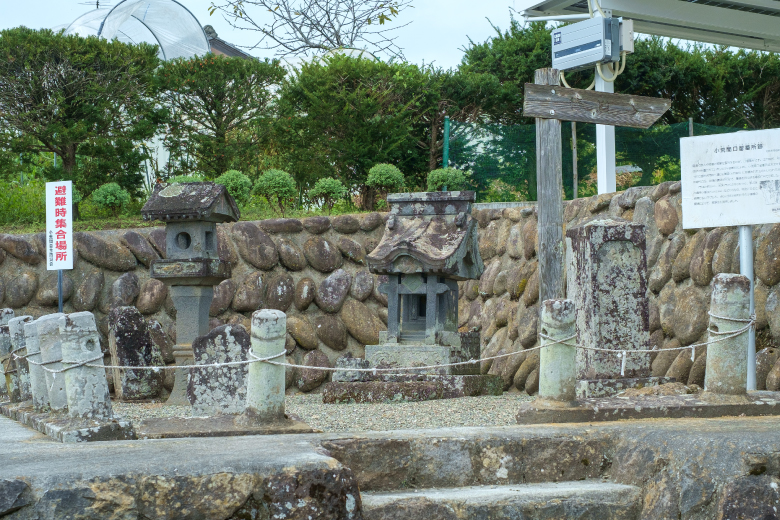Bansho refers to guard stations that were located on domain borders to monitor the movement of travelers and goods across domains. Koarama Bansho was established during the Tenmon Years (1532–1555) by Takeda Nobutora, Shingen’s father and ruler of the unified province of Kai. Strategically located on Upper Bomichi Road leading to Daimon Pass to protect Kai from invaders from Shinshu, it played an important role in Shingen’s conquest of Shinano.
In the Edo Period (1603–1868), the guard stations came to be called kuchidome-bansho (gated checkpoints), and a total of 25 such stations were installed within Kai. Farmers from three neighborhood villages manned the Koarama Bansho as part of their village obligations, and by the late Edo Period (1603–1868), the people of Nagasaka Village engaged in trade with Suwa by carrying goods on horses through the checkpoint.
Koarama Bansho used to comprise a gate, a bamboo fence, and a thatched roof hut, but the building was removed during the Meiji Period (1868-1912). When Koumi Railway opened in 1933, the station was relocated to its present location, where only the ruins now remain.
In the Edo Period (1603–1868), the guard stations came to be called kuchidome-bansho (gated checkpoints), and a total of 25 such stations were installed within Kai. Farmers from three neighborhood villages manned the Koarama Bansho as part of their village obligations, and by the late Edo Period (1603–1868), the people of Nagasaka Village engaged in trade with Suwa by carrying goods on horses through the checkpoint.
Koarama Bansho used to comprise a gate, a bamboo fence, and a thatched roof hut, but the building was removed during the Meiji Period (1868-1912). When Koumi Railway opened in 1933, the station was relocated to its present location, where only the ruins now remain.
COURSE MAP
Let's go to the next spot!
- 130m / 4 on foot Minutes
- 25Iwafunejizoson Deity
